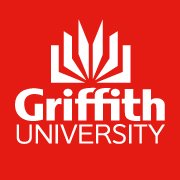Brief description
The evaluation of whether attending a community recreational group has an impact on the social connectedness, health and wellbeing of disadvantaged adults.Full description
The Reclink Model;Participants were recruited from two Reclink networks in South East Queensland. Reclink established a profile in 2006 through its Choir of Hard Knocks for adults experiencing homelessness and disadvantage in Melbourne. A documentary about the choir was shown on ABC television in 2007. Reclink is a national organisation that networks existing government and non-government agencies in an area of need, to provide sporting and recreational group activities for members at low or no cost. The agencies refer their clients in to Reclink activities based on their clients’ interests, and the agencies provide various levels of support (such as transport, and carer support) for their clients as needed. Support workers are from a range of professions including social work, occupational therapy, and community services. In this study we recruited adults joining a Reclink recreational group and surveyed them upon joining and again after three months to find out if the group activity had any influence on measures of health, wellbeing, and social connectedness. The Reclink groups were held once a week and included yoga (45 per cent), indoor soccer (26 per cent), art classes (12 per cent), sewing (six per cent) and drumming (six per cent).Participants;Participants were 101 adults aged 18 to 71 years (mean age = 46 years) and 70 per cent were female. At the first survey, 28 per cent of the sample was in some type of paid work, including only five per cent in full time work. Just under half were in their own home, with 17 per cent in social housing, 17 per cent staying with friends/ family, and one per cent in emergency accommodation. Forty-five per cent of the sample disclosed that they had been given a formal diagnosis of mental illness, most commonly schizophrenia (14 per cent), schizoaffective disorder (four per cent), bipolar disorder (four per cent), depression (eight per cent) and anxiety disorders (seven per cent). Others alluded to mental health problems but were unsure if they had been diagnosed. In terms of health measures, 30 per cent of the sample smoked cigarettes, 42 per cent were sedentary (exercising less than weekly). We obtained surveys from 49 of the participants three months later. No differences were found at baseline between participants who dropped out compared to those who returned the second survey in terms of their gender, employment status, housing status or mental health diagnosis. The most common reasons for dropping out were that the group was discon- tinued or that the participant obtained employment — meaning they were no longer available to attend. Of the 49, the vast majority (93 per cent) reported that they had attended a Reclink group weekly.Notes
Scores on the below measures collected as participants entered a Reclink recreation group and again 3 months later; Life satisfaction Social isolation GP visits (past 3 months) Days paid work (past month) Days homeless (past month) Perception of change in life overall (since joining recreational group) Perception of change in physical health (since joining recreational group) Perception of change in mental health (since joing recreational group)Data time period: 2014
Spatial Coverage And Location
text: Logan
Subjects
Activities |
Community engagement with public space |
Health |
Homelessness |
Life |
Mental health |
Physical health |
Reclink |
Recreation |
Social |
Work |
User Contributed Tags
Login to tag this record with meaningful keywords to make it easier to discover


